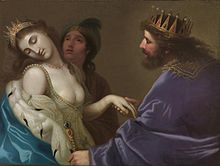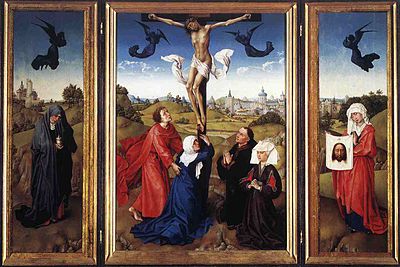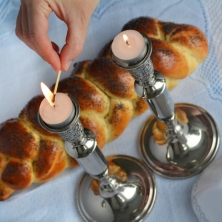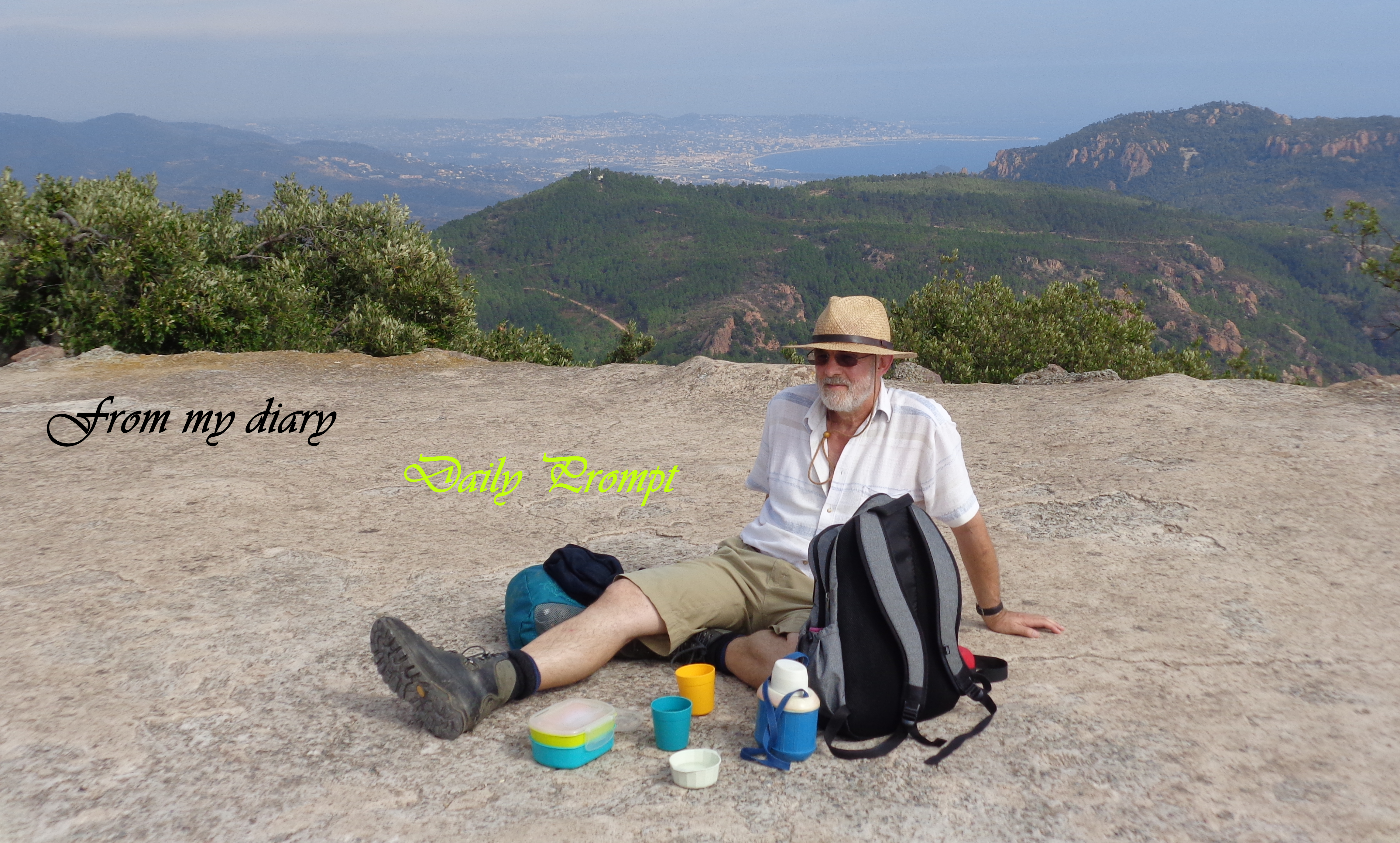For many of the faithful, god-fearing Christians around the world, the resurrection of the Christ is central to that faith they hold so dear. Every year around March-April dramas are re-enacted commemorating the Passion, Death and Resurrection of Jesus put on by devotees as a form of renewal. Like everything else that goes with religious matters, most Xians are blissfully ignorant about the true origins of this, the central theme of their faith. Coloured eggs are given to friends and the bunny is the animal associated with Easter but little thought is spared for the study of the roots of these traditions and the relationship Xianity shares with the “pagan” world it forever disrespects.

Horus (Photo credit: waywuwei)
The truth of Easter’s origins is not helped by the decontextualised way many Eurocentric researchers analyse history. Most people who write about Easter trace the name to a Mother Goddess whose name in various European traditions was Astarte, Ishtar, Ashtoreth, Cybele, Demeter, Ceres, Aphrodite, Venus, and Freya. The name Easter derives from the Anglo-Saxon goddess of spring Eostre or Ostara. While these many rivers all contributed to the Easter celebrations, we should stop ignoring the African river from which they flowed.
Easter is an ancient spring solstice festival – the same spring solstice festival that gave us Carnival and Phagwa – involving the death and resurrection of the husband of the Great Earth Mother Goddess. This resurrection, far from being a miraculous historical event that occurred two thousand odd years ago, is a symbolic spiritual renewal that has its origins in the dim mists of the earliest human societies in Africa.
The Xian commemoration of Easter stems from this spiritual observance, only to be perverted into a myth of an historical death and resurrection of the biblical Jesus who then appoints a successor in the form of Peter. This myth was cleverly constructed for one purpose and one purpose only, the usurping and maintaining of political power. This point was well explored by Elaine Pagels and need not be dealt with here [see also the essay “Orthodox” Christianity and the birth of European Nationalism]
Xianity’s Easter, the resurrection of Christ Jesus is just a retelling of the Dramas of the Egyptian Yusir/Osiris and the Babylonian Bel, which in turn was a retelling of the symbolic death of the Great Mother of the primordial clan so that the community may survive. It is also bound up with the Nile Valley African’s concept of creation and their observations of the sun’s movements through various star constellations.

A statue of Isis nursing her son, housed in the Louvre (Photo credit: Wikipedia)
According to the Egyptian account of creation only the primordial waters existed at first. Then Ra, the sun, came out of an egg (a flower, in some versions) that appeared on the surface of the water. Ra brought forth four children, the gods Shu and Geb and the goddesses Tefnut and Nut. Shu and Tefnut became the atmosphere. They stood on Geb, who became the earth, and raised up Nut, who became the sky. Ra ruled over all. Geb and Nut later had two sons, Set and Yusir/Osiris, and two daughters, Isis and Nephthys. Osiris succeeded Ra as king of the earth, helped by Isis, his sister-wife. Set, however, hated his brother, killed him and cut him up into 14 pieces. Isis finds and reassembles Yusir then embalmed her husband’s body with the help of the deity Anubis, who thus became the god of embalming. The powerful charms of Isis resurrected Osiris, who then ascended to sit at the side of the divine father Amen-Ra and who became king of the netherworld. Heru/Horus, who was the son of Osiris and Isis, later defeated Set in a great battle and became king of the earth.”
The parallels with the later Xian version are obvious. Indeed, in that short version of the story one can pick out the biblical concepts of the creation out of water, the warring twins, the Mother-Son consort, the death and resurrection of the saviour. Jesus was called the Christ, the Messiah; temporal kingly titles that came from “Karast” and “Messu”, the Egyptian titles for Yusir, Heru and Thoth. Among the ancient pre-Christian cultures, eggs symbolised creation, fertility, renewed life and resurrection. In ancient Egypt/Kemet and Persia during the spring festivals coloured eggs were eaten as part of the elaborate rituals in much the same way that they are being eaten today.
There are many traditions that involve the recreative power of the egg mostly related to the movement of the sun and stars across the heavens:
“As the sun climbed toward mid-day it was called Ra, great and strong. When the sun set in the west it was known as Atum the old man, or Horus on the horizon. As a solar-disk he was known as Aten. The sun was also said to be an egg laid daily by Geb, the ‘Great Cackler’ when he took the form of a goose.”
“Then there is the myth sometimes called the Birth and Flight of Horus. This tale, found in the Coffin Texts, is a combination of two stories. The first is the birth of Horus, and the second is a very old and fragmented myth that the sun burst out of an egg laid by a goose floating on the primordial waters before creation. The Birth and Flight of Horus begins just after Osiris’s death.”
Herodotus informs us that there was an annual festival in ancient Kemet/Egypt to commemorate the descent of King Rhampsinitus into the Underworld and his return to earth. Part of this ritual, apparently connected to the Yusirian Drama, was the enveloping of a priest in a shroud by two other priests, disguised as wolves. These two wolflike characters – portraying the divine guides of the dead – conducted the shrouded one to a temple of Auset/Isis outside the city where they left him. They would later return and lead the shrouded priest, who enacted the role of King Rhampsinitus, back into the city. On his return, the shrouded priest brought with him a napkin, supposedly given to him by Auset. Parts of this ceremony became the narrative in the Gospel of John where we read of visitors to Jesus’ tomb beholding a napkin and a shroud and two angels.
Then there is the Babylonian Drama of Bel; an ancient cuneiform tablet, now in the British Museum, produced about two thousand years before the Xian era, seems to have been used by Babylonian priests, one of whom acted as an announcer at the drama. John Jackson in his book “Man, God and Civilization”, mentions the works of Scottish scholar Arthur Findlay in which he relates the drama:
“The service would be started by the singing of a psalm similar to the Psalms of David in the Old Testament. Following one or more psalms, a priest would recite the appropriate prayer for the occasion. Then the announcer, holding a copy of the program, would arise and read out in a clear, loud voice
Scene I – “Bel is taken prisoner”
An actor representing Bel, the Babylonian Christ, was seen on the stage. Other actors dressed as soldiers would arrest the saviour-god. As the prisoner was led away by the squad of soldiers, the announcer again rose up and called out:
“Scene II – Bel is tried in the Hall of Justice”
At this point the scene of a trial is enacted. A judge was present, and witnesses testified for and against the prisoner, who was found innocent but sentenced to death anyway as in the similar case of Jesus in the Gospels. After the sentencing of the victim, the next scene was called out:
“Scene III – Bel is smitten”
This scene showed the jeering and baiting of the prisoner after the sentence of death had been passed. The next moment would be:
“Scene IV – Bel is led away to the mount”
The actor impersonating the victim was led away by guards to the sacred grove atop the hill. Then the announcing priest read:
“Scene V – With Bel are taken two malefactors, one of whom is released”
Actors representing the two criminals were seen on the stage and, after a trial, one was found guilty, the other innocent. The guilty victim was condemned to death and the innocent one released.
Although the death scene of saviour Bel was a part of the Babylonian Mysteries, this was not shown in the amphitheatre. This fact is explained by Arthur Findlay as follows:
The program does not contain a scene of the god’s death. This may be because it took place on a hill where he was hung on one of the trees in the sacred grove, or crucified, or slain on an altar, and so could not be enacted on the stage. By now, the theatre is empty and everyone has climbed to the top of the hill to witness the death scene. As the actor, taking the place of Bel, and the one representing the malefactor, are not actually killed, it may be that the death the saviour-god actually suffered was not enacted. This is unlikely and it is more probable that the tablet which has been found referred only to the performance in the amphitheatre, which accounts for the death scene not being included thereon. They were heavy and would not be brought away from the theatre. After the scene, when the two malefactors appeared and one was sent after Bel to be sacrificed, the people would know that, for the time being, the performance in the theatre was over. For that reason, and because the death scene was not taking place in the theatre, it is not engraved on the tablet.
After the death scene, the audience would return to the theatre and the announcer would declare:
“Scene VI – After Bel has gone to the mount, the city breaks into tumult”
in this scene the disorderly mob was shown rioting and screaming to exemplify the tumult that took place in the city. The next scene was then announced
“Scene VII – Bel’s clothes are carried away”
In this scene Bel’s body had returned from the mount and was seen on the stage by the multitude. His clothes were removed and his corpse was prepared for burial. The priest then announced the next act.
“Scene VIII – Bel goes down into the mount and disappears from life”
the stage being near the side of a hill, a tomb was dug and the body of Bel was placed therein. The announcement of the subsequent scene would be:
“Scene IX – A weeping woman seeks him at the gate of burial.”
The weeping woman, perhaps the mother, wife, or lover of the dead saviour, added a dramatic touch to this ancient mystery play. Then followed the climax, when the announcer read:
“Scene X – Bel is brought back to life”
The moving story of what happened in the last act of the Babylonian Passion Play and its effect on later religions has been vividly reconstructed by Arthur Findlay:
We can imagine the enthusiasm and excitement this announcement would cause. The people and there is thunderous noise and shouting. Then comes a hush and they reseat themselves awaiting in eager expectancy the denouement of this great drama. During the silence, the stone which has been pushed up against the tomb is seen to move and slowly it is pushed aside. Out of it comes Bel in his burial clothes. As he emerges from the tomb, the audience rises and shouts in its frenzy till all are hoarse. The great drama has reached its climax. Their god has re-appeared to them, death has been conquered, and he has secured for all life in the hereafter. As the actor could not re-appear as a spirit as did Bel after his sacrifice, the re-appearance had to be a physical one, just as the Christian drama depicts Jesus having left the tomb as a human being……This great religious service has never been forgotten. It was copied by the Greeks and is still performed in memory of Christ. It has been preserved for us throughout the Christian era in the four Gospels. The Christian dramatist made such changes in the details as were required so that people should believe that it was an historical event which happened in Jerusalem and that the actors were those who believed to have been disciples of Jesus.
This and the other dramas along the Nile Valley, bear testimony to the irrefutable fact that these mythical dramas and Passion Plays are of a much greater antiquity than Christianity. The Xian resurrected Jesus is only the resurrected Karast of the ancient Nile Valley. He was also the resurrected saviour of Persia, India, ancient America and a host of other cultures all well documented by John Jackson, Kersey Greaves, Rev CH Vail, Arthur Findlay and Godfrey Higgins.

The congregation in an Oriental Orthodox church in India collects palm fronds for the Palm Sunday procession (the men of the congregation on the left of the sanctuary in the photo; the women of the congregation are collecting their fronds on the right of the sanctuary, outside the photo. (Photo credit: Wikipedia)
We can now make sense of certain extra-religious Easter customs. The Easter Egg hunt, which is restricted to children, recalls part of the historian Plutarch’s narrative wherein he relates that it was children who told AST/Isis where to locate Yusir’s body. Thus, it is children who have the honour of searching for Yusir. The prize of the hunt, the Golden Egg is merely the great solar “Egg”, while the other prize, the silver egg is the full moon. Still another Easter tradition, eating hot cross buns evokes the celestial Mount Calvary upon which the “crossification” of the “sun” of god the very moment that its upward journey from the southern half of the celestial equator to the northern half separates it into two. Further, Palm Sunday, which commemorates Jesus’ entry into Jerusalem, his way strewn with palm leaves, in preparation of the Passover, can be interpreted in three ways:
- We can identify Jesus with the Kemetic/Egyptian Ra-Yiu, who as the Golden Ass, is a zootype of the sun
- It evokes the pre-Mosaic veneration of Ra-Yiu by the ancestors of the Israelites
- It symbolises Jesus’ power over Satan, who, in his original form as the evil Set, was depicted as an Ass. Remember that the name Satan itself comes from the Egyptian “Set-An”.

Palm Sunday in Sanok (Photo credit: Wikipedia)
Note also that in ancient Kemet/Egypt, the palm branch was viewed as a time symbol and its bifurcated leaves represented the equinox with its equal separation of day and night. The Palm Sunday procession then, symbolises Jesus the sun, Ra-Yiu, “passing over” the celestial equator on his ecliptic ascent at the equinox.
Further, because of the “wobble” created by the rotation of the earth around its axis, this event cannot take place at the exact time every year. This is why, with regard to the celebration of Easter the time varies from as early as March 22nd or as late as April 25th. In general, although not the strict rule, Easter is held on the Sunday after Pasach (Passover) which is usually the first Sunday after the first full moon of spring. It is actually the intentional Xian mis-keeping of Pasach for anti-Jewish purposes. Because Pasach is kept in accordance with a lunar-solar calendar rather than with a strictly solar calendar, Pasach will always occur on the full moon of the first Jewish month, which begins with the closest new moon to the vernal equinox (no earlier than March 10).
The Easter bunny or hare is another signpost to the celestial myths of pre-Christian Kemet. All over Africa the hare is a lunar animal because it never appears to close its eyes, making it a type of full moon. It’s also a zootype of Yusir/Osiris: as an animal that leaps up, it is identified with Yusir as he rises from the dead.
We have just glimpsed at the great antiquity and esoteric symbolism behind an event most of us simply took for granted. As always, it is not the intention to dismiss the bible and Xianity with simplistic views. It is about throwing light on a subject that for far too long has been simplified. In a subsequent essay we will examine the crucifixion from a slightly different perspective.
- The Catholic Encyclopedia
- The Encyclopedia Biblica
- Tertullianus Against Marcion – Tertullian
- History of Christianity
- World’s Crucified Saviors – Rev C H Vail
- Afrikan Origins of the Major World Religions – Prof. Yosef ben-Jochannan
- African Origins of the Major “Western” Religions – Prof. Yosef ben-Jochannan
- Holy Blood Holy Grail – Henry Lincoln, Michael Baigent
- Messianic Legacy – Henry Lincoln, Michael Baigent
- Echoes of the Old Darkland – Charles S. Finch MD
- History of the First Council of Nice
- Introduction to African Civilisations – John Jackson
- Pagan Origins of the Christ Myth – John Jackson
- Man, God and Civilisations – John Jackson
- African Presence in Early Europe – edited by Dr. Ivan Van Sertima
- Black Athena Vol. I – Martin Bernal
- Ancient Egypt the Light of the World [2Vols.] – Gerald Massey
- Gerald Massey’s Lectures – Gerald Massey
- Dead Sea Scrolls Deception – Henry Lincoln
- Who Is This King of Glory? A Critical Study of the Christus/Messiah Tradition — Alvin Boyd Kuhn
- The Dictionary of Bible and Religion – editor William Gentz
- Decline and Fall of the Roman Empire Vol. I – Edward Gibbon
- Forgery in Christianity – Joseph Wheless
- The Women’s Encyclopedia of Myth and Secrets – Barbara G. Walker
- The Dark Side of Christian History – Helen Ellerbie
- Women, Food and Sex in History –Soledad de Montalvo [4 vols.]
- The Passover Plot – Hugh Schonfield
- James; the Brother of Jesus – Robert Eisenman
- The Gnostic Gospels – Elaine Pagels
- Personal interviews with the late elder Clemey George
- The Secret Relationship between Blacks and Jews – edited by the Nation of Islam
- African presence in Early Asia – Runoku Rashidi
- The World’s 16 Crucified Saviours – Kersey Greaves
– By Corey Gilkes
From RaceandHistory.com
+
Please do find to read:
- Eostre, Easter, White god, chocolate eggs, Easter bunnies and metaphorical resurrection
- High Holidays not only for Israel
- 14-15 Nisan and Easter
- Death of Christ on the day of preparation
- Seven days of Passover
- Altered to fit a Trinity or Ishtar the fertility goddess
- Peter Cottontail and a Bunny laying Eastereggs
- Risen With Him
- Creation of the earth out of something
- Tu B’Shvat, the holiday of the trees
- Ember and light the ransomed of Jehovah
- Because men choose to go their own way
- Taking care of mother earth
+++
- The History and Origins of Easter (personalcreations.com)
Easter, which celebrates the resurrection from the dead of Jesus Christ, is a holiday actually based on an ancient Pagan ritual. Unlike most holidays, Easter does not fall on the same set date each year. Instead, Christians in the West celebrate Easter on the first Sunday after the full moon of the vernal equinox on March 21. Therefore, Easter is celebrated each year between March 22 and April 25. The exact origins of Easter are unknown, but some sources believe that the word “Easter” is taken from the Teutonic goddess of fertility and spring – Eostre. Easter has also been traced to the Latin words Hebdomada Alba – meaning white week – referencing Easter week in which white clothing is worn by people who get baptized.
- Does Christianity Have Pagan Roots? (Part 2) The Pagan Myth Myth… No, I’m Not Stuttering (godfromthemachineblog.wordpress.com)
Superman at times would use his super breath and blow really hard and it produced powerful wind. And at the end of the first Superman movie, the 1978 version with Christopher Reeve, when Lois Lane dies, Superman flies around the earth so fast in the opposite direction of the earth’s spin that he changes the direction of the earth’s rotation and literally rewinds time so he is able to rescue Lois Lane before she dies*. Then, in the early 1990’s, DC Comics ran the storyline “The Death of Superman” where Superman was killed in a battle with Doomsday, but Superman returned after a long hiatus.
- Ultimate Resource of Egyptian Gods (costumesupercenter.com)
The major deities controlled the most important aspects of life and the lesser deities were in charge of specific duties, i.e, protecting the crops. As it was in ancient times, some groups still worship the gods and goddesses, one such being Isis, goddess of women and magic.
- Does Christianity Have Pagan Roots? (Part 1) How Did “Easter” Originate? (godfromthemachineblog.wordpress.com)
In one such blog article I read at this time last year, the author performed the most death-defying acrobatics I’ve ever read to attempt to show how Christianity is just a bootlegged copy of pagan religions. The comments below the article praised the author’s brilliance. One comment that stayed with me was a woman who unabashedly wrote: “There you go making sense again!” Sadly, the article wasn’t just death-defying but logic- and history-defying too.
- The Truth About Easter (politicsandthebible.wordpress.com)
Easter is one of the biggest holidays in the Christian religion, along with Christmas and Good Friday. However it is also has many myths and misconceptions surrounding it. Some are honest mistakes and others are straight out lies.
+
If you remember the controversy surrounding The Da Vinci Code, part of the premise of the story was that much of the Christian faith was removed or added over time. So much editing had occurred that there was very little evidence pointing to it except for a small circle of true believers who knew better and the hierarchy in the Vatican who didn’t want people to know the truth. One date when much of this editing occurred is 325 AD, during the Council of Nicaea, which is when most skeptics believe the Bible was compiled and most of the major tenets of Christianity were added. The problem with this is that the resurrection was very much a part of the religious creed for the 1st century Church. Cornelius Tacitus, one of the best Roman historians of the 1st century, mentions in the 15th book of his Annals a “mischievous superstition” was held by “a class hated for abominations, called Christians.” What could have this superstition been? Jesus proclaiming to be God? Well the emperors and several characters in Greco-Roman myths already did that, so nothing there that’s too outrageous. That he did miracles? The ancient world was full of miracle workers and performers of various wonders. Jesus shouldn’t have even made it on the radar if that was the reason. Could it be his resurrection? That seems to be the only one that fits. Tacitus was known for being skeptical of resurrection tales and the fact that people in a new religion with a deity that had died and rose again would have caught his attention particularly since Nero used them as a scapegoat. Josephus, a contemporary Jewish historian, also mentions the resurrection as well. “On the third day he appeared to them restored to life…” Some have argued that this text has been tampered with, but it should be noted the Arabic version of the text also includes it but is over all less biased in tone. Therefore we can be assured that Josephus did faithfully record the Christian belief of Christ’s resurrection. Whether he believed it or not is up for debate. And finally we have I Corinthian 15:1-11. Often described as the first creed to be used by the Church, it adamantly recounts the death and resurrection of Christ. Considering this epistle would have been written in the 40s or 50s AD, it is quite clear that the early Church believed in the resurrection since the beginning.
- Did Christians really ‘steal’ Easter? (religion.blogs.cnn.com)
Just because words in different languages sound the same doesn’t mean they are related. In Swedish, the word “kiss” means urine.
But the biggest issue for Christians is the claim that Jesus’ resurrection – the faith’s central tenet – might have pagan roots.
Even apart from whether or not Jesus actually rose from the dead, many Christians claim that the very idea is unique.
There are other biblical examples of people being raised from the dead – think of Jesus raising Lazarus. But those people went on to die again. Only Jesus was raised from the dead to live forever.
- Jesus vs Horus Myth…The True Facts (faithgracetorah.net)
Everyday there are thousands, possibly hundreds of thousands if not millions of people trying to disprove the Bible and mystify the story of Jesus to where they will try to connect him to some other god of another culture such as the Egyptians. Other times, people don’t even try to connect him to another god, but rather they form pseudo comparisons with people such as Ceasar. But are these stories, myths, and comparisons true or is it just some pseudo scholarship gone viral?! Today I’d like to tackle one of these myths in particular: the Jesus – Horus connection.
- Easter Tradition: Egg Hunt (historytalks.wordpress.com)
The egg was a symbol of the rebirth of the earth in Pagan celebrations of spring and was adopted by early Christians as an Easter symbol of the resurrection of Jesus. The egg symbol was likened to the tomb from which Christ arose. Traditionally the game is associated with Easter and Easter eggs (Easter egg hunt), but it has also been popular with spring time birthday parties.
At least since the 17th century the idea of the Easter Bunny to bring the Easter eggs has been known.
The novelty of the introduction of Easter egg hunts into England is evidenced by A. E. Housman’s inaugural lecture as Professor of Latin at University College, London in 1892, in which he said, “In Germany at Easter time they hide coloured eggs about the house and garden that the children may amuse themselves in discovering them.”
- Happy Easter (zodiaclivetarotreading.com)
The term ‘Easter‘ is not of Christian origin. It is another form of Astarte, one of the titles of the Chaldean goddess and also it links to the pagan goddess Eostre (a.k.a. Eastre). She was the Great Mother Goddess of the Saxon people in Europe. Similarly, the “dawn goddess of fertility was known as Ostare, Eostre and Ausos. Similar Goddesses were known by other names in other cultures and were celebrated in the springtime. Some were:
- Aphrodite, the Greek Goddess
- Hathor from ancient Egypt;
- Ostara a Norse Goddess












 9 Adar, may be looked at as a day we should recognize the urgency to impart skills for constructive conflict to future Jewish leaders and therefore the Pardes Center for Judaism and Conflict Resolution has therefore chosen this day to be the international
9 Adar, may be looked at as a day we should recognize the urgency to impart skills for constructive conflict to future Jewish leaders and therefore the Pardes Center for Judaism and Conflict Resolution has therefore chosen this day to be the international













 Maria-Lichtmis wordt dus op 2 februari gevierd. Deze datum valt precies veertig dagen na Kerstmis, waarmee een afgesloten periode van geestelijke groei wordt gesymboliseerd. Op Maria-Lichtmis worden in de katholieke Kerk traditioneel kaarsen gewijd en wordt soms ook een speciale kaarsenprocessie gehouden voor aanvang van de eucharistieviering. {
Maria-Lichtmis wordt dus op 2 februari gevierd. Deze datum valt precies veertig dagen na Kerstmis, waarmee een afgesloten periode van geestelijke groei wordt gesymboliseerd. Op Maria-Lichtmis worden in de katholieke Kerk traditioneel kaarsen gewijd en wordt soms ook een speciale kaarsenprocessie gehouden voor aanvang van de eucharistieviering. {
























 In the
In the  For Pesach for Christians and Jews the period should have them seriously consider them about slavery God’s people had but also the slavery many of us have today.
For Pesach for Christians and Jews the period should have them seriously consider them about slavery God’s people had but also the slavery many of us have today.









 Photographer
Photographer  With new vegetation springing up near the edges of the ponds at
With new vegetation springing up near the edges of the ponds at 




















































































